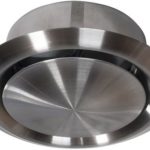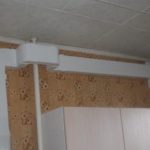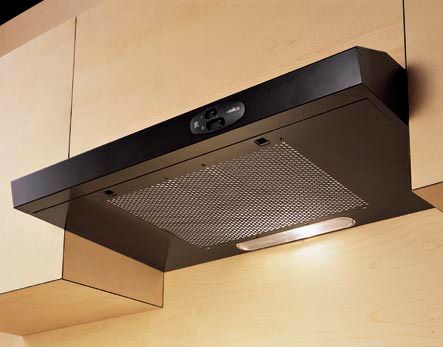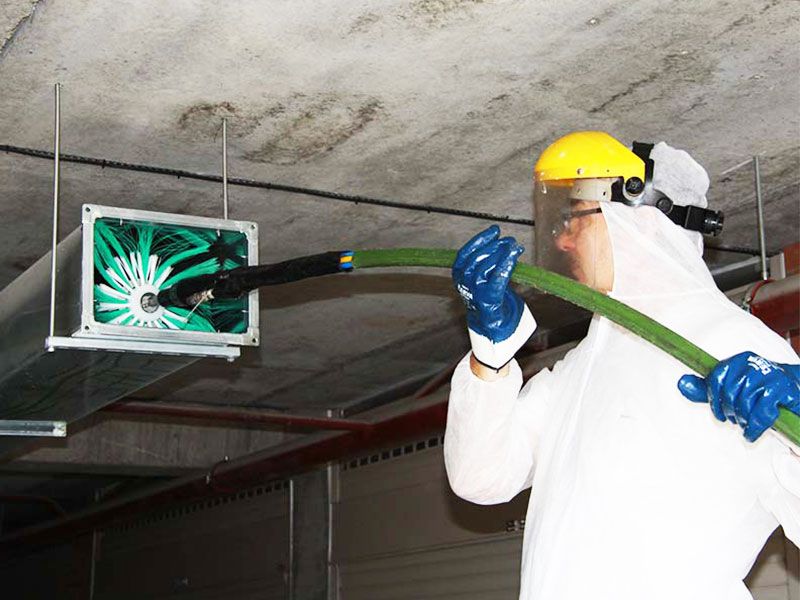Ventilation deflector
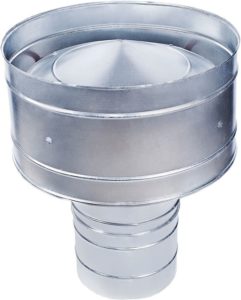 The deflector is a special nozzle that is installed in the upper part of the exhaust pipe and serves to protect the channel and improving the ventilation process. The effective operation of the ventilation system largely depends on atmospheric conditions. In winter, when the temperature difference between indoors and outdoors is large, there are excellent conditions for draft inside the natural ventilation duct.
The deflector is a special nozzle that is installed in the upper part of the exhaust pipe and serves to protect the channel and improving the ventilation process. The effective operation of the ventilation system largely depends on atmospheric conditions. In winter, when the temperature difference between indoors and outdoors is large, there are excellent conditions for draft inside the natural ventilation duct.
Warm “home” air tends upward to the street. In summer, the situation changes radically, since the temperature conditions outside and inside the house are almost equalized. This entails a significant reduction in pressure drop and thrust.
Natural ventilation is noticeably deteriorating. In addition, the wind also has a special effect, improving or complicating air exchange. Just installing a deflector allows you to reduce the influence of atmospheric conditions, improving the functioning of the entire ventilation system. Plus, this technical device prevents debris, insects and birds from entering the mine. The material for manufacturing can be metal or plastic.
The content of the article
Design and principle of operation
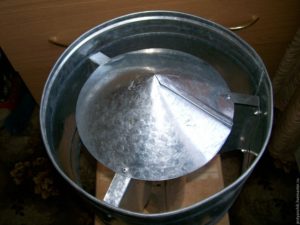 To understand how a deflector works, you need to have an idea of its structure. The standard nozzle consists of the following parts:
To understand how a deflector works, you need to have an idea of its structure. The standard nozzle consists of the following parts:
- diffuser, which is a truncated cone;
- an umbrella that protects the channel from all kinds of debris;
- housing in the form of a cylinder connected to the diffuser using brackets.
The truncated cone with its lower part is placed on the ventilation duct pipe that goes out onto the roof. It is in this node that the pressure decreases due to the acceleration of air flows.
Reference! Here the Bernoulli effect makes itself felt, when an increasing flow rate, provoked by a narrowing of the channel, leads to a drop in pressure. Air from the room begins to rush into the rarefied space.
The protective umbrella is attached to the diffuser using stands. Thanks to the brackets, the housing is fixed, acting as a flow divider and directing air masses to the diffuser. The efficiency of the system with a properly selected and installed deflector can increase by approximately 15–20%.
Classification of ventilation deflectors
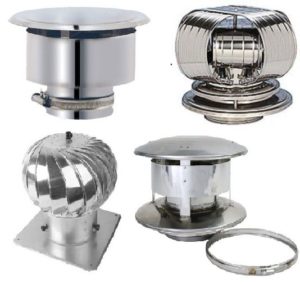 Devices can be classified on several grounds:
Devices can be classified on several grounds:
- by model - TsAGI, Grigorovich, Astato, rotary ventilation turbine, deflector in the form of the letter H and a weather vane of the “Net” or “Hood” type;
- according to the shape of the pommel – flat, semicircular, with an opening lid, gable, spherical;
- according to operating principle – static and rotational;
- at the installation site – products for the chimney, basement, air conditioner and roof.
Let's take a closer look at the most popular options that have proven themselves in practice.
TsAGI model named after the place of development - the Central Institute of Aerohydrodynamics. It is a classic version of a conical nozzle with a protective cover placed inside a cylindrical screen.The latter ensures the absence of backdraft even in large air ducts.
Grigorovich deflector consists of a conical diffuser and a return hood, fastened into a single structure. Moreover, the narrowing of both elements is directed towards each other. In this way, a double effect is achieved, increasing the efficiency of the device.
Nozzles from the French company Astato equipped with an electric fan to enhance traction. The degree of vacuum required for the full functioning of the entire system turns out to be greater than in analogues operating only due to wind.
Rotary turbine has a spherical cap, which is a metal drum with many blades. The manufacturing material is thin and light enough for the turbine to rotate even at a wind speed of 0.5 m/s. The operating efficiency is 2–4 times higher than static models, but there is a significant disadvantage of the design - it is absolutely unproductive in complete calm.
Technical product in the form of the letter H in fact, it is a classic option, the productivity of which is at least doubled due to the unusual shape of the nozzle. Two deflectors, when connected, resemble the letter H, mounted on one pipe. It is this that is attached to the ventilation shaft.
Weather vane "Hood" It is represented by a rotating cap that captures the direction of the wind and several canopies hanging over each other. They act as a diffuser and at the same time protect against precipitation. The wind, passing through the canopies, receives acceleration. Thus, a rarefied space is formed above the pipe, where air from the room tends.
How to make a ventilation deflector with your own hands
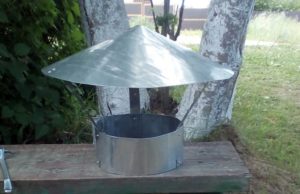 Before you start making a deflector, you should prepare thoroughly. To do this, you need to complete drawings, select materials and prepare tools. The dimensions of the future product can be taken from the table (it is easy to find on the Internet) or be guided by formulas. The width of the diffuser blank is determined based on the internal diameter. Once you know the outer diameter of the ventilation pipe, you need to multiply it by two. The height is determined by multiplying the diameter by 1.7.
Before you start making a deflector, you should prepare thoroughly. To do this, you need to complete drawings, select materials and prepare tools. The dimensions of the future product can be taken from the table (it is easy to find on the Internet) or be guided by formulas. The width of the diffuser blank is determined based on the internal diameter. Once you know the outer diameter of the ventilation pipe, you need to multiply it by two. The height is determined by multiplying the diameter by 1.7.
First you need to make patterns from cardboard, then assemble a model of the future deflector from it and check the correct execution. Next, using a marker on a steel sheet (thickness within 1 mm), all the blanks are drawn.
After cutting comes the assembly stage. The workpieces are given the required shape, fastening is carried out using rivets or semi-automatic welding. The outer cylinder can be fastened to the inner cone; if you take several metal strips, they will act as brackets. Using the same strips, the protective top can be connected to the cylinder or fixed with rivets on the inner cone.
As a rule, the ventilation pipe is located about a meter above the ridge, so it is more advisable to mount the entire device on the ground, going up to the roof with a ready-made option.
Important! The deflector is installed at a height, so you should take precautions and use insurance. It will be better if the work is performed with an assistant.
Tips for making different types of deflectors
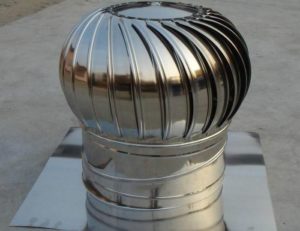 In order for a device aimed at improving the performance of the ventilation system to adequately cope with the tasks assigned to it, it is worth listening to some advice from experienced professionals. Choosing rotary models for installation in areas with snowy and cold winters is not the best option. There is a high probability of icing and snow covering the device, which will negate all its functionality.
In order for a device aimed at improving the performance of the ventilation system to adequately cope with the tasks assigned to it, it is worth listening to some advice from experienced professionals. Choosing rotary models for installation in areas with snowy and cold winters is not the best option. There is a high probability of icing and snow covering the device, which will negate all its functionality.
The picture shows a turbo deflector.
When preparing a drawing of a particular model for parts, you need to take a margin of 1 cm from each edge. This will allow you to make a high-quality and reliable connection.
If you have a sufficient level of skill, you can also try to make a rotary turbine yourself. However, you will need to carefully prepare the drawings and cut out many petals of the same shape, which together will ensure the rotation of the entire installation.

